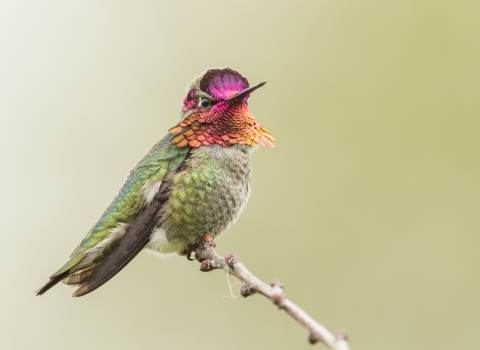After careful consideration of the comments received on the proposals various alternatives, the Service has decided to implement Alternative B, which involves acquisition of lands and conservation easements from willing sellers of up to an additional 108,127 acres in Cameron and Willacy Counties including South Padre from the end of Park Road 100 north to the Port Mansfield Channel, lands in the Redhead Ridge area between Highways 100 and the Brownsville Navigation Channel, and acreage north of Highway 100 and east of FM l847, as well as along the Arroyo Colorado north of Harlingen.
Land acquisition will depend on the availability of willing sellers, the quality of the habitat, and availability of funds. Willing sellers have already offered about 56,000 acres to the Service in recent years.
The Service described the following reasons for the refuge expansion:
(1) the need to provide additional riparian riparian
Definition of riparian habitat or riparian areas.
Learn more about riparian (streamside) and thicket habitats for the endangered ocelot, which at present is limited to about 30 animals on the refuge,
(2) the need to protect and enhance migratory bird habitats such as San Martin Lake, Bahia Grande, Resaca de los Cuates, and other water bodies in the project area,
(3) the need to protect habitats on South Padre for species such as endangered sea turtles, peregrine falcons, piping plovers, other shorebirds, wading birds, waterfowl, and neotropical migrants,
(4) the need to protect fishing, hunting and other wildlife- dependent public recreational opportunities for future generations along the Gulf beach, in the Lower Laguna Madre, in native brush lands and along area resacas (old river oxbows) and other wetlands.
The proposal first surfaced over a year ago in June 1998. A draft Land Protection Compliance Document was released for public review and comment in August 1998. Because of public concerns, the Service agreed to revise the original document and release a new draft environmental assessment for public review. The second draft had a 60-day review period, which ended May 28, 1999. The Service has addressed issues raised in public comments by adding to and clarifying the text in the Final Environmental Assessment and Final Conceptual Management Plan.
"This land is prime habitat for a variety of wildlife," said Nancy Kaufman, Regional Director of the U.S. Fish and Wildlife Services Southwest Region. "We believe that protecting the area as part of the refuge will not only benefit wildlife but also the local tourism economy as well as the American people who live in or visit the area."
The Service will support and cooperate with the Texas Open Beaches Act, which mandates public access on all Texas Gulf beaches regardless of ownership. This will insure the continued enjoyment by the public of current recreational activities on South Padre Island, such as driving on the beach, beach combing, swimming, fishing, camping, and other such activities. The Service will not charge a fee for visiting lands it owns on the island.
There will be an increased recreational potential that will benefit the areas growing tourism economy. The Service intends to expand recreational fishing, hunting, and wildlife watching opportunities in areas that were formerly not available to the public. Landowners who are interested in preserving and enhancing wildlife habitat on their lands are also encouraged to participate in the many other programs available from the Texas Parks and Wildlife Department, the U.S. Department of Agriculture, other public agencies, and non profit organizations.
As soon as they are printed, copies of the final document will be mailed to individuals who have previously expressed an interest in the project. Additional copies will be available upon request by calling the Laguna Atascosa National Wildlife Refuge in Rio Hondo, Texas, at (956) 748-3607. Copies will also be available for review at most public libraries in the two-county project area.
The U.S. Fish and Wildlife Service is the principal Federal agency responsible for conserving, protecting, and enhancing fish, wildlife and plants and their habitats for the continuing benefit of the American people. The Service manages the 93-million-acre National Wildlife Refuge System comprised of more than 500 national wildlife refuges, thousands of small wetlands, and other special management areas. It also operates 66 national fish hatcheries, 64 fish and wildlife management assistance offices and 78 ecological services field stations. The agency enforces Federal wildlife laws, administers the Endangered Species Act, manages migratory bird populations, restores nationally significant fisheries, conserves and restores wildlife habitat such as wetlands, and helps foreign governments with their conservation efforts. It also oversees the Federal Aid program that distributes hundreds of millions of dollars in excise taxes on fishing and hunting equipment to state wildlife agencies.



